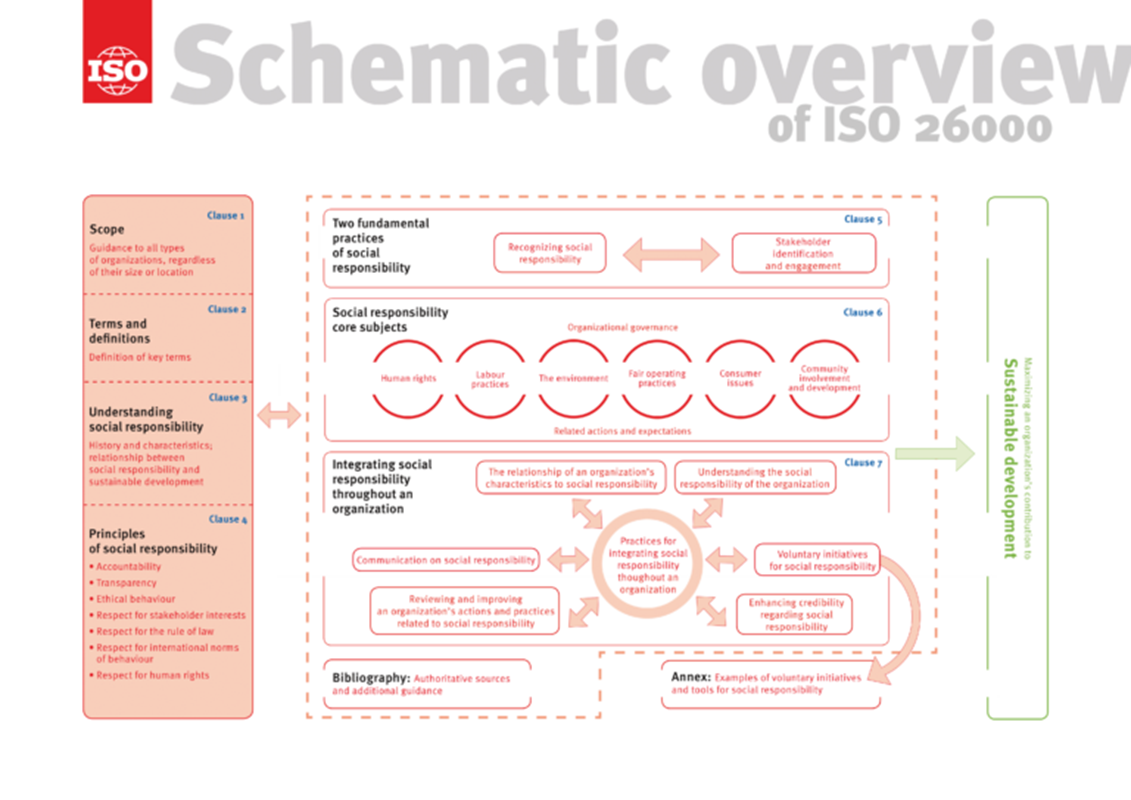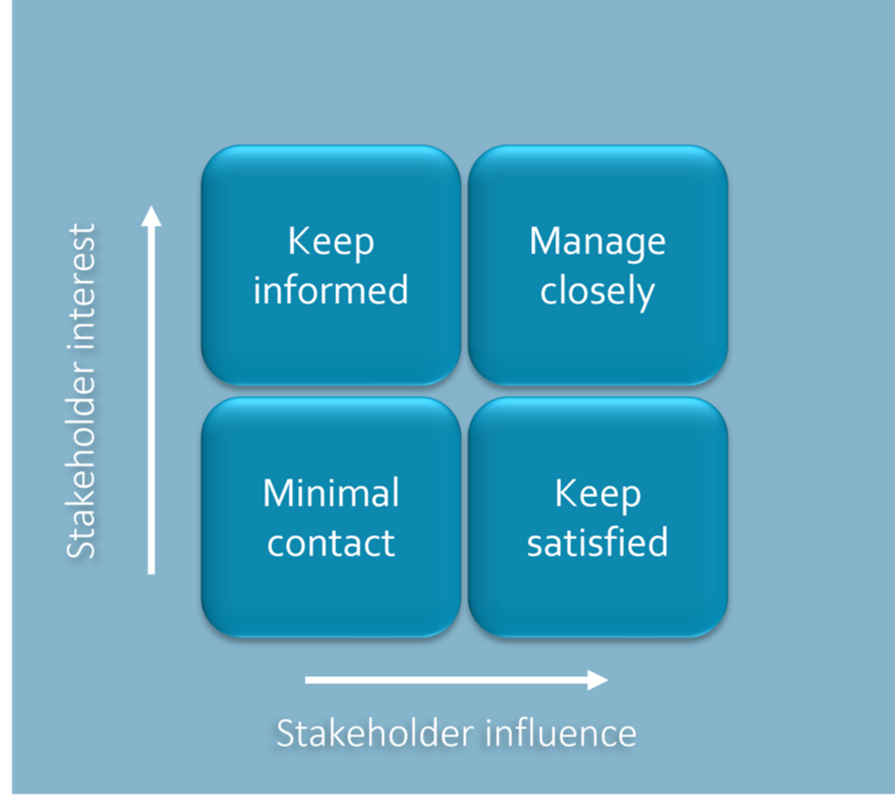Sustainability can create value for a company in many ways. For example, directly through being energy efficient. Indirectly through employer branding. Or even unconsciously through reputation and customer retention. Still, sustainability is by definition first and foremost a means to create value for society.
In a business environment, society is represented by a company’s stakeholders. In this sense, stakeholders have a key role to play to set the course and define the actions of a business. This makes stakeholder engagement a crucial component of any mature sustainability approach.
Yet, despite the potential of stakeholders to steer a company’s sustainability, their impact remains undervalued by businesses. To remedy this, we consistently encourage our customers to involve their stakeholders in the development of a sustainability strategy or roadmap.
Let’s have a look at how organisations can identify, prioritise, and effectively engage with their stakeholders.
Why you should engage with your stakeholders
Sustainability serves society. Stakeholders are the representatives of that society. Stakeholder engagement is therefore an essential component of sustainable development.
The role of stakeholders in a business ecosystem becomes clear when we look at the definition of corporate social responsibility (CSR).
CSR is the company’s responsibility for the impacts of its business activities on society. Those impacts may be social, environmental, or ethical, and are without exception experienced by a vast array of stakeholders.
In other words, CSR leads companies to “integrate social and environmental concerns in their business operations and interactions with their stakeholders. [It is] the way through which a company achieves a balance of economic, environmental and social imperatives … while at the same time addressing the expectations of shareholders and stakeholders.” (UNIDO)
Leading frameworks, such as the ISO 26000 guidelines for social responsibility and the GRI Standards, consider stakeholder engagement a fundamental practice. In the schematic overview of ISO 26000 below, stakeholder engagement is one of the two fundamental practices of social responsibility (ISO).

Without stakeholder engagement, we can hardly speak about sustainability. Through stakeholder engagement, companies can address the expectations of stakeholders and create benefit for them. At the same time, it allows companies to prepare for change.
Stakeholder engagement offers insight into the innovation agenda of a company, as it lays bare the priority areas to tackle. It can help optimise the stakeholder experience and, as such, improve the business offering.
The impacts of business activities can constitute pain points for stakeholders. Removing these increases the overall quality of a product or a service. Acting upon pain points often requires partnerships with the same stakeholders in the value chain.
In our experience, we notice that managers who participate in stakeholder dialogues frequently experience an “Aha! moment” and tend to regularly refer to statements made during those dialogues afterwards. These statements help keep the teams focussed on where the true challenges lie.
How you can engage with your stakeholders
If a company wants to define what is important to consider in its sustainability strategy, or measure its effectiveness on sustainability, it has to look at the groups who are or might be affected by its activities.
This can be where trouble starts for those who are convinced that stakeholders with opposing views need to be managed and steered in the “right” direction.
The contrary is true. When a company takes its responsibility seriously and engages with its stakeholders in a respectful manner, it can unleash true innovation without the need to align everyone on all topics.
Stakeholder engagement lays bare all potential gaps in a company’s activities. It shines a light on any untapped territory and other business opportunities. These insights can lead to innovative approaches or developments, which will stretch the boundaries of corporate activity. At the same time, stakeholder engagement also helps protect those boundaries by identifying the risks.
Rather than a one-way storytelling – which is very much what old style negotiation is about – stakeholder engagement is a two-way conversation.
How to start engaging stakeholders?
Stakeholder engagement relies on active listening and trying to understand different perspectives.
We know that taking stakeholders into account is key for a company’s sustainable development, and that stakeholder engagement is about valuing different perspectives through dialogue.
Let’s have a look at how to identify and prioritise different stakeholder groups and the conditions to build effective stakeholder management.
Who are your stakeholders?
In theory, stakeholders are all the parties that can affect or be affected by an organisation’s actions in a direct, indirect, or even unconscious way.
We tend to automatically think about external parties such as regulatory bodies (EU and Member States), business partners, and NGOs. Yet, also internal parties such as employees, labour unions, and shareholders are stakeholders. The ISO 26000 guidelines make a distinction between the following groups:
industry,
government,
labour,
consumers,
nongovernmental organisations,
service, support, research, and others.
Prioritising your stakeholder groups
With such a vast array, it’s not only important to identify, but also to map your stakeholders. There are several different approaches to stakeholder mapping. The most practical one is simply to position each stakeholder group in relation to two axes: interest and influence.

Thanks to this mapping, it’s easy to detect which actions should be taken per stakeholder group. For example, stakeholders who have a limited interest and influence can be sustained with minor effort. On the other hand, those with more potential to experience impact or to influence a company’s activities and who have a keen interest, should be managed closely.
Evidently, stakeholders with high interest and high influence are the priority stakeholders for any organisation.
Stakeholder engagement in practice
Once the stakeholders are identified and prioritised, it’s time to start engaging them. There are different ways to organise effective stakeholder consultation or dialogue. For example, a questionnaire, a workshop, or a round table discussion. A useful framework is the AA1000 Stakeholder Engagement Standard.
The AA1000 Stakeholder Engagement Standard
The AA1000 Stakeholder Engagement Standard was published in 2015 by the global consulting and standards firm AccountAbility. It establishes a “global benchmark for conducting high-quality stakeholder engagement projects and programs.” (AccountAbility)
The Standard contains a practical framework to organise stakeholder engagement. It’s created on the principles of “Inclusivity, Materiality and Responsiveness” that aim to[1]:
Engage with stakeholders to understand their expectations about, among others, governance, strategies, and performance.
Report to them about performance and the issues that matter to them in a transparent matter.
Develop innovative and sustainable responses to current and future issues.
Today, the AA1000 Stakeholder Engagement Standard is the most widely used stakeholder engagement standard by enterprises, governments, private, and public organisations worldwide.
Conditions to building effective stakeholder engagement
Of course, it’s worthwhile to engage stakeholders on any given moment in time, but we have some recommendations to create a meaningful engagement for both company and stakeholders.
Suppose your stakeholder represents an internationally recognised NGO. That person frequently receives demands to participate in stakeholder platforms, which could easily lead to what is called “stakeholder fatigue”.
To avoid this, it’s important to assure a qualitative consultation. Let’s suppose you want to consult your stakeholders to define your most important sustainability topics, i.e., your materiality. You could do this by means of an open question. Or you can propose a selection of topics based on your insights. The higher the quality of the input (questionnaire), the higher the quality of the output (feedback) you will receive.
Doing the homework will lead to a higher involvement of your stakeholders and more valuable feedback. Even more so when a company engages its stakeholders not only to validate materiality, but also to review its strategic sustainability goals and ambitions. In that case, you really grab the interest of your stakeholders.
Showing what sustainability means for you as a company, and where you are heading, will stimulate the investment a stakeholder makes to contribute to your objectives.
The maturity framework of stakeholder engagement
At Sustenuto, we have integrated stakeholder engagement in our unique Sustainability Growth ModelTM, more specifically, in different phases of the sustainability strategy formulation and its implementation.
We identify six key moments of stakeholder engagement, in line with a growing maturity of the sustainability strategy:
Map: identifying your stakeholders
Consult: one-way consultation, for instance by means of an international survey
Dialogue: two-way consultation, for instance during a stakeholder platform
Involve: cooperation with stakeholders on specific sustainability projects
Engage: forging real partnerships to achieve pre-set sustainability goals and ambitions
Validate: asking stakeholders’ feedback on the progress your company is making
We see that companies that engage with their stakeholders at different moments of their sustainable development grow in their belief and understanding of the value of stakeholder engagement. Consequently, they intensify their engagement and partnerships.
Conclusion
Stakeholder engagement is one of the two fundamental practices of sustainability, next to recognising your responsibility as an organisation. It is thus fundamental to involve stakeholders in your sustainability efforts, not only while developing a sustainability strategy, but also during its implementation.
The AA1000 Stakeholder Engagement Standard is the leading international standard to begin engaging stakeholders. At Sustenuto, we have integrated stakeholder engagement in our Sustainability Growth ModelTM to support our clients in an effective and integrated way.


